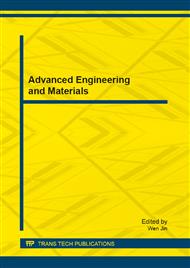[1]
Affatato S, Testoni M, Cacciari GL, Toni A. Mixed-oxides prosthetic ceramic ball heads. Part II: effect of the ZrO2 fraction on the wear of ceramic on ceramic joints. Biomaterials 1999; 20(20): 1925-(1929).
DOI: 10.1016/s0142-9612(99)00093-9
Google Scholar
[2]
Deville S, Chevalier J. Martensitic relief observation by atomic force microscopy in Yttria-Stabilized Zirconia. Journal of the American Ceramic Society 2003; 86(12): 2225-2227.
DOI: 10.1111/j.1151-2916.2003.tb03639.x
Google Scholar
[3]
Deville S, Chevalier J, Dauvergne C, Fantozzi G, Bartolomé JF, Moya JS, et al. Microstructural investigation of the aging behavior of (3Y-TZP)-Al2O3 composites. Journal of the American Ceramic Society 2005; 88(5): 1273-1280.
DOI: 10.1111/j.1551-2916.2005.00221.x
Google Scholar
[4]
Chevalier J. What future for zirconia as a biomaterial? Biomaterials 2006; 27(4): 535-543.
DOI: 10.1016/j.biomaterials.2005.07.034
Google Scholar
[5]
Garvie RC, Hannink RH, Pascoe RT. Ceramic steel? Nature 1975; 258(5537): 703-704.
DOI: 10.1038/258703a0
Google Scholar
[6]
Cherif K, Gueroult B, Rigaud M. Al2O3-ZrO2 debris life cycle during wear: effects of the third body on wear and friction. Wear 1997; 208(1-2): 161-168.
DOI: 10.1016/s0043-1648(96)07455-8
Google Scholar
[7]
Faga M.G., Vallée A., Bellosi A., Mazzocchi M, Thinh N.N., Martra G., Coluccia S. Chemical treatment on alumina–zirconia composites inducing apatite formation with maintained mechanical properties. In press on Journal of the European Ceramic Society.
DOI: 10.1016/j.jeurceramsoc.2011.12.020
Google Scholar
[8]
Ko H-C, Han J-S, Bächle M, Jang J-H, Shin S-W, Kim D-J. Initial osteoblast-like cell response to pure titanium and zirconia/alumina ceramics. Dental Materials 2007; 23(11): 1349-1355.
DOI: 10.1016/j.dental.2006.11.023
Google Scholar
[9]
Tamura RN, Oda D, Quaranta V, Plopper G, Lambert R, Glaser S, et al. Coating of titanium alloy with soluble laminin-5 promotes cell attachment and hemidesmosome assembly in gingival epithelial cells: potential application to dental implants. Journal of Periodontal Research 1997; 32(3): 287-294.
DOI: 10.1111/j.1600-0765.1997.tb00536.x
Google Scholar
[10]
Hormia M, Owaribe K, Virtanen I. The dento-Epithelial Junction: cell adhesion by type I Hemidesmosomes in the absence of a true Basal Lamina. Journal of Periodontology 2001; 72(6): 788-797.
DOI: 10.1902/jop.2001.72.6.788
Google Scholar


